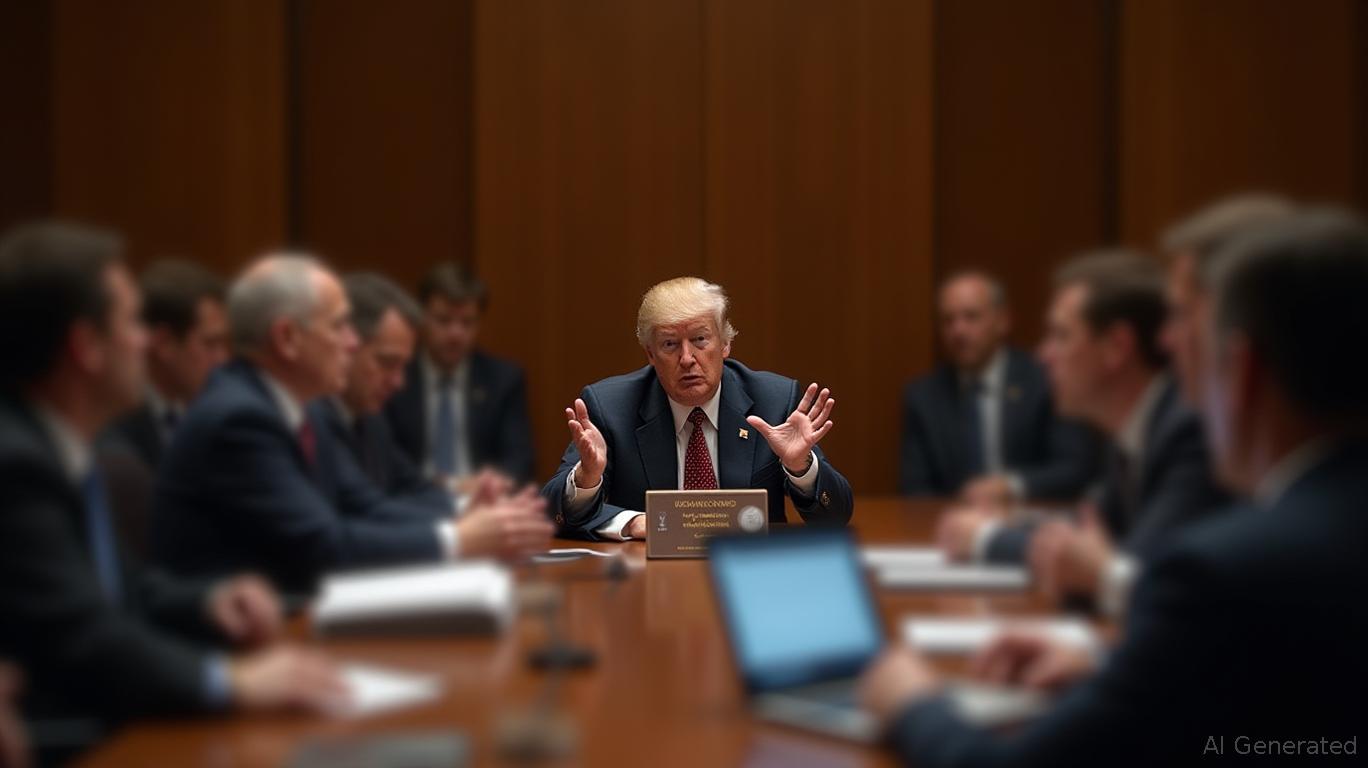U.S. Cryptocurrency Legislation Aims to Unify Oversight and Boost Innovation by 2025
- U.S. lawmakers aim to pass a 2025 crypto bill dividing CFTC/SEC oversight to resolve regulatory ambiguities and boost market confidence. - The legislation seeks to streamline compliance by assigning CFTC derivatives oversight and SEC securities regulation, addressing fragmentation hindering innovation. - Market analysts link the bill to Bitcoin's potential growth, though altcoin adoption remains limited due to low Altcoin Season Index levels. - Institutional investors and blockchain firms support the fra

The regulatory environment for cryptocurrencies in the United States is on the verge of major changes, as legislators expect to approve a sweeping crypto market bill by the close of 2025. This proposed law, which is currently being evaluated, is designed to clarify regulatory responsibilities by splitting authority between the Commodity Futures Trading Commission (CFTC) and the Securities and Exchange Commission (SEC). By dividing oversight, the bill aims to resolve persistent uncertainties in the industry, where overlapping mandates have complicated compliance for businesses.
The legislation’s main features include a clear assignment of duties: the CFTC would regulate derivatives and futures, while the SEC would be responsible for securities-related matters. Lawmakers have stressed the need for the SEC to accelerate its rulemaking process to keep pace with the bill’s schedule. This approach is intended to streamline regulations, addressing the fragmentation that has previously stifled innovation and undermined investor trust in the U.S. crypto sector.
Experts in the market believe this bill could serve as a turning point for Bitcoin’s trajectory. The White House has identified the legislation as a seasonal boost for BTC, especially as institutional interest and broader economic trends intersect. With Bitcoin currently commanding 59% of the crypto market (as of August 2025), the bill’s enactment could prompt more investment into alternative coins, assuming that regulatory transparency reduces investor hesitation. Nevertheless, the Altcoin Season Index, which tracks the performance of the top 100 altcoins compared to
The proposed regulatory structure has been positively received by industry participants, such as institutional investors and blockchain enterprises. Digital asset treasuries (DATs) and stablecoin providers, which are experiencing increased institutional interest, are likely to gain from a more structured regulatory setting. For example, firms like
Although the bill’s progress depends on ongoing congressional discussions, its expected approval highlights a broader initiative to establish the U.S. as a leader in the global crypto arena. A joint U.S.-UK taskforce, created to enhance international crypto market cooperation, has also underscored the value of consistent regulations in driving innovation. Still, analysts warn that there are risks to implementation, such as possible legal disputes over how the SEC defines securities and the CFTC’s ability to enforce the new rules.
Disclaimer: The content of this article solely reflects the author's opinion and does not represent the platform in any capacity. This article is not intended to serve as a reference for making investment decisions.
You may also like
Announcement on Bitget listing CSCOUSDT, PEPUSDT, ACNUSDT STOCK Index perpetual futures
Stock Futures Rush: Trade popular stock futures and share $250,000 in equivalent TSLA tokenized shares. Each user can get up to $8,000 TSLA.
Bitget margin trading to support BGB cross margin trading and loans
Bitget margin trading to support BGB cross margin trading and loans